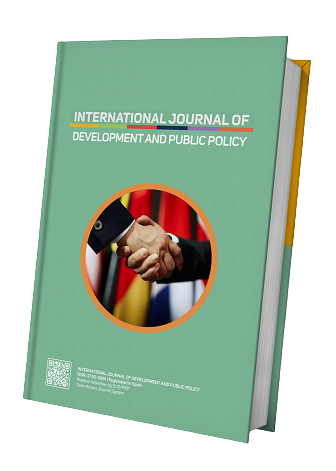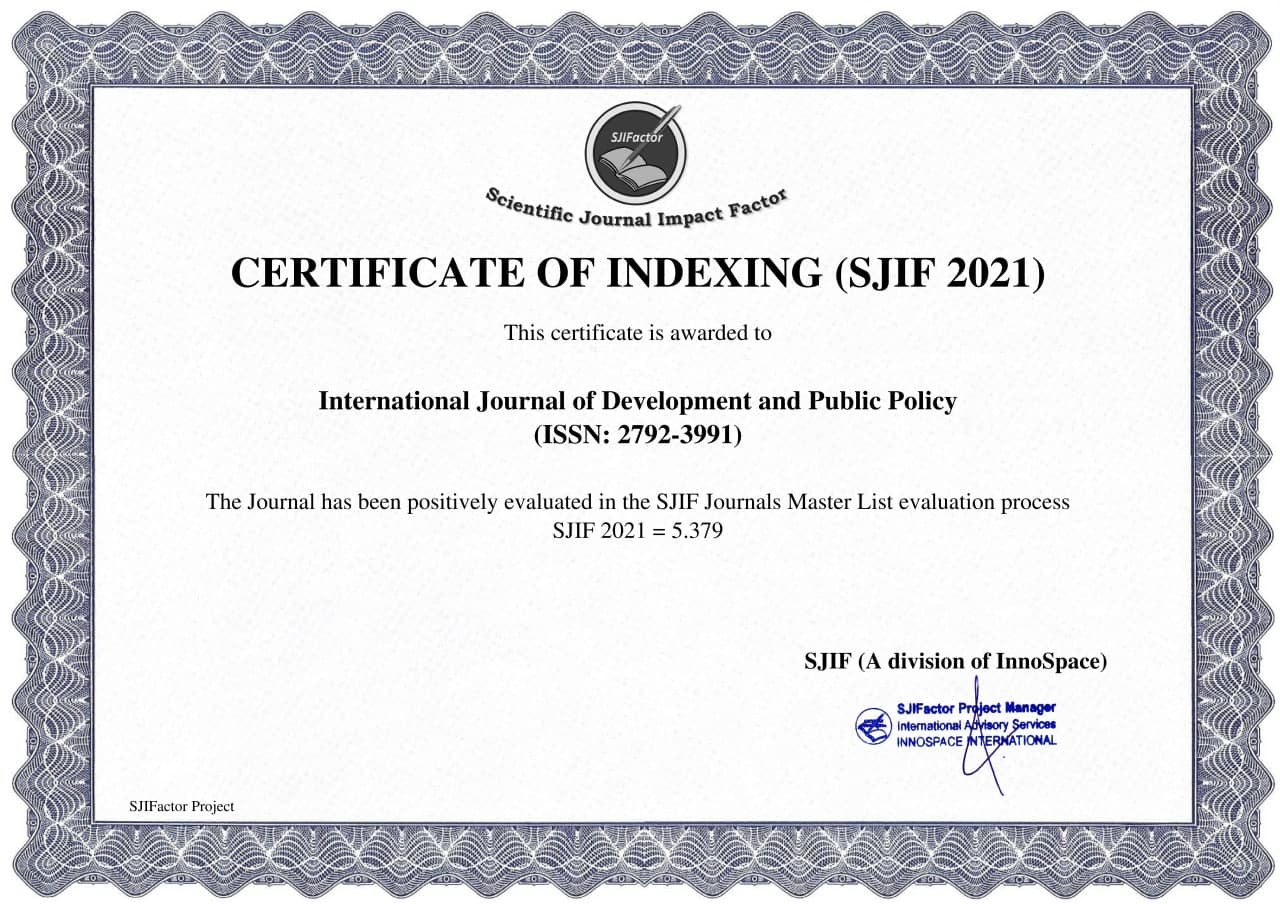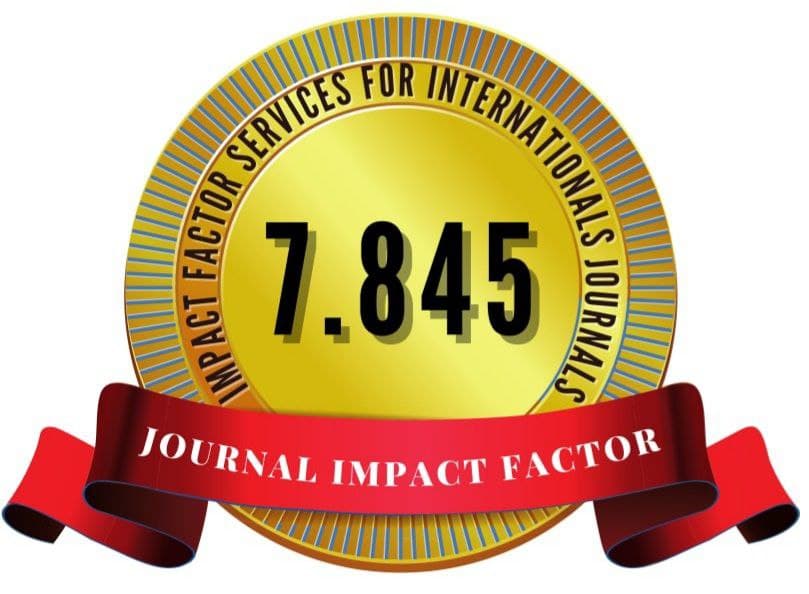Barriers to Deployment of Information Communication and Technology in Tertiary Institutions in Nigeria
Keywords:
Information Communication, Technology, Tertiary InstitutionsAbstract
This paper discussed the barriers preventing effective deployment of information communication technologies in the tertiary institutions in Nigeria. The paper is a review paper. The paper used secondary data to support every point raised. The paper employed systematic review system to collect data online and in the print resources. The paper identified poor funding of ICT, inadequate ICT facilities, unstable power supply, weak internet connection, High Cost of Internet Services, poor ICT literacy among academic staff and students and poor implementation of ICT policies as barriers to the effective deployment of information communication technologies in the tertiary institutions in Nigeria. Based on this findings, the paper recommends that the government and other stakeholders in the tertiary institutions should increase funding to information communication technology programme in the tertiary institutions. Government should provide adequate ICT infrastructure facilities in all the institutions. Government should ensure constant supply of electricity in all the campuses. Government should direct internet service providers to improve their services in all the institutions. Government should subsidize the price of ICT facilities for students and lecturers. Government should implement all ICT policies in the tertiary institutions.
References
[1] E. A. Airen, “ICT literacy among undergraduates in Nigerian universities,” Springer Science+Business Media, 2011.
[2] J. A. Adavbiele, “The Use Of ICT to Enhance University Education In Nigeria,” Int. J. Educ. Learn. Dev., vol. 4, no. 5, pp. 1–11, 2016.
[3] K. K. Adewale and A. A. Taiye, “Enhancing University Administration Through ICTs In Nigeria,” J. Res. Bus. Econ. Manag., vol. 10, no. 4, pp. 67–84, 2018.
[4] B. O. Babatunde and P. I. A., “Challenges and Barriers to ICT Deployment in Nigerian Universities,” [Undated].
[5] M. S. Dada, I. S. Atobauka, and N. J. Ogunode, “Deployment of Information Communication Technology for Universities Administration in Nigerian Public Universities: Challenges and Way Forward,” Middle Eur. Sci. Bull., vol. 19, pp. 165–172, 2022.
[6] M. S. Dada, J. A. Olowonefa, and N. J. Ogunode, “Deployment of Information Communication Technology(s) for Educational Planning in Nigeria: Problems and Way Forward,” Int. J. Integr. Educ., vol. 5, no. 3, pp. 195–203, 2022.
[7] Federal Republic of Nigeria, National Policy on Education, Abuja: NERDC Press, 2014.
[8] O. A. Johnson, “Enhancing quality education through information and communication technology in Nigeria,” in Access, Equity and Quality in Higher Education, J. B. Babalola, G. O. Akpa, A. O. Ayeni, and S. O. Adedeji, Eds., NAEAP Publication, 2007.
[9] L. Gbadamosi, “Challenges of e–teaching profession and ways forward: An educational planners’ view,” ICT Workshop Organizing Teachers’ Registration Council of Nigeria (TRCN), Adeniran Oginsasnya College of Education, Ijanikan, Laos, 2nd–8th July, 2006.
[10] S. Ibrahim, “Tertiary Education Trust Fund (Tetfund), Research and Development and Nigeria’s Higher Education,” Eur. J. Educ. Stud., vol. 3, no. 7, pp. 799–816, 2017.
[11] S. A. Idowu, “Tertiary Education Trust Fund (Tetfund), Infrastructural and Sustainable Development of Nigerian Higher Institutions,” 2nd Int. Conf., Fed. Polytech. Ilaro, pp. 532–540, 2020.
[12] A. Idowu, M. Esere, and B. R. Iruloh, “Computer Accessibility, Usage and Lecturers’ Perception of Innovative ICT-Based Assessment in a Nigerian University,” in Sustainable Transformation in African Higher Education, Springer, pp. 215–226, 2017.
[13] T. M. Ijov and R. N. Wombu, “Impact of Information and Communication Technology on Tertiary Institutions,” BSUJEM, vol. 1, no. 2, pp. 28–34, 2019.
[14] E. Livinus, “Computer literacy and utilization among academic and non-academic staff of Ebonyi State College of Education, IKWO,” J. Qual. Educ., vol. 9, no. 1, pp. 1–5, 2013.
[15] O. Nwosu and E. F. Ogbomo, “ICT in education: A catalyst for effective use of information,” Practice Northwest Library Association, 2012. Available: http://www.eprimers.org/.
[16] L. C. and C. Brown, Using information and communication technology in developing countries, USA: McGraw-Hill, 2011.
[17] R. Oliver, Creating meaningful contexts for learning in Web-based settings, Brisbane: Queensland Press, 2011.
[18] N. J. Ogunode, T. G. Olatunde-Aiyedun, C. U. Ukozor, and E. O. Ayeni, “Deployment of Information Communication Technology in Addressing Corruption in Tertiary Institutions in Nigeria,” Int. J. Appl. Res. Sustain. Sci., vol. 2, no. 11, pp. 975–990, 2024.
[19] N. J. Ogunode, K. Edinoh, and R. C. Okolie, “Public Private Partnership Model and Implementation of Tertiary Education Program in Nigeria,” Am. J. Sci. Integr. Hum. Dev., vol. 1, no. 6, pp. 1–12, 2023.
[20] J. N. Ogunode and R. I. Mcbrown, “Committee system in Nigerian public tertiary institutions: Problems and way forward,” Int. J. Integr. Educ., vol. 5, no. 5, pp. 1–9, 2022.
[21] N. J. Ogunode and L. Musa, “Entrepreneurial Education Programme in Tertiary Education in Nigeria,” 2024.
[22] N. J. Ogunode, D. G. Adamu, and T. S. Ajape, “Challenges Preventing Academic Staff from using Information and Communication Technology(s) for Teaching in the Nigerian Public Universities and the Way Forward,” Pindus J. Cult. Lit. ELT, vol. 8, pp. 5–15, 2021.
[23] N. J. Ogunode et al., “An Investigation into the Challenges Preventing Academic Planning Officers from Effectively Using ICT in Federal University Wukari, Nigeria,” J. Sci. Comput. Eng. Res., vol. 2, no. 1, pp. 147–154, 2021.
[24] N. J. Ogunode et al., “Challenges preventing non-academic staff of Nigerian Universities from using ICT effectively and ways forward,” Electron. Res. J. Eng. Comput. Appl. Sci., vol. 3, pp. 39–50, 2021.
[25] T. G. Olatunde-Aiyedun, “Artificial intelligence (AI) in education: Integration of AI into science education curriculum in Nigerian universities,” Int. J. Artif. Intell. Digit., vol. 1, no. 1, pp. 1–14, 2024. Available: https://ssrn.com/abstract=4733349.
[26] T. G. Olatunde-Aiyedun, A. A. Daniels, and O. S. Olamoyegun, “Role of Digital Technologies in Enhancing Environmental Geography Education: Case Studies from Community Garden Projects,” CUSTECH Int. J. Educ., vol. 1, no. 1, pp. 108–121, 2024. Available: https://custechijoe.org.ng/index.php/custechijoe/article/view/18/13.
[27] T. G. Olatunde-Aiyedun and H. Hamma, “Impact of Artificial Intelligence (AI) on Lecturers' Proficiency Levels in MS PowerPoint, Canva, and Gamma in Nigeria,” J. Humanit. Artif. Intell., vol. 2, no. 8, pp. 1–16, 2023.
[28] M. Singh, Global Perspectives on Recognising Non-Formal and Informal Learning: Why Recognition Matters, Springer-UNESCO, 2015.
[29] R. Tongia, “Information and Communications Technology (ICT),” 2004. Available: https://www.cs.cmu.edu/~rtongia/ICT4SD_Ch_2--ICT.pdf.
[30] M. Umar and R. M. Rosnaini, “A Review of Obstacles of ICT Usage in Nigerian Tertiary Educational Institutions,” Int. J. Hum. Resour. Stud., vol. 8, no. 4, pp. 177–185, 2018.
[31] UNESCO, Information and Communication Technology in Schools: A Handbook for Teachers, 2005.
[32] UNESCO, Manual for Pilot Testing the Use of Indicators to Assess the Impact of ICT Use in Education, 2007.
[33] S. Wale and R. Temitope, “Availability and Utilization of ICT Facilities for Enhancing University Campus Security in South-South, Nigeria,” Int. J. Comput. Sci. Math. Theory, vol. 5, no. 2, pp. 35–45, 2019.
[34] World Bank, Information and Communication Technologies: A World Bank Group Strategy, Washington, D.C: The World Bank Group, 2002.






